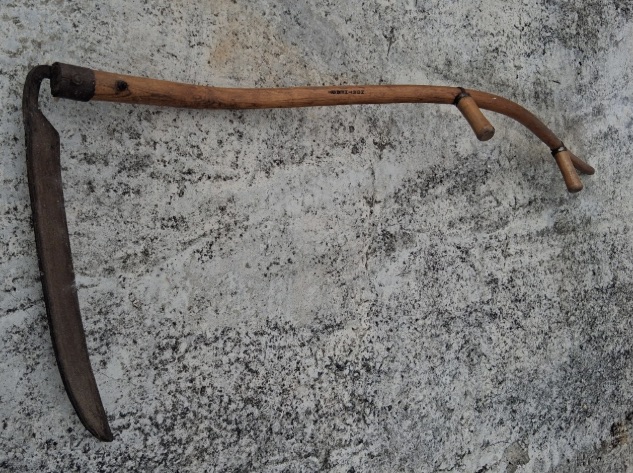Today, with all the contemporary machinery of modern farming, it’s easy to forget how a poor farming family might have survived in the early years of the twentieth century. Much of the farm labour would have been done by the farmer himself, often with the assistance of a horse or two.
But horses cannot cut wheat stalks, and in a tiny farm, the best option for cutting would have been a scythe. I’ve tried to swing a scythe — it’s not an easy proposition at all. But with good farmer’s muscles, a stout heart and stamina, a farmer can make steady progress. I’ve read that a team of four scythers (think of the song, One Man Went to Mow, which adds man upon man to the cohort of meadow mowers, with enough space between to avoid the swinging scythe of the previous mower) can mow an acre of wheat in about six hours. By extension then, a single man could mow an acre over the course of two days.
Farms at the turn of last century in northern France were typically very small affairs of about 5 hectares, with fields further sub-divided according to heirs. A wheat field could only be as large as the farmer could sow, with as much seed corn as was left over from the previous winter, and then harvest in the early autumn.
When you’re that close to the land, doing the hard labour yourself, and your family’s very survival depends on your crop, it must feel as if you are part of the living landscape, an intimate component of the food chain. To get a sense of a single person’s scything efforts, do visit Henry Walton’s painting Landscape with a Figure Scything via ArtUK. Alternatively, consider Botan Anderson’s scything blog.

Leave a Reply